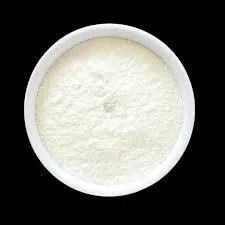
Dec . 04, 2024 10:01 Back to list
hpmc grades viscosity
Understanding HPMC Grades and their Impact on Viscosity
Hydroxypropyl methylcellulose (HPMC) is a versatile and widely used cellulose ether, known for its thickening, emulsifying, and film-forming properties. HPMC is commonly used in various industries, including pharmaceuticals, food, cosmetics, and construction. One of the key parameters that define the performance of HPMC is its viscosity, which largely depends on its grade. In this article, we will explore the different grades of HPMC and their impact on viscosity, as well as their applications.
What is HPMC?
HPMC is a non-ionic, water-soluble polymer derived from cellulose. The modification process involves the substitution of hydroxyl groups on the cellulose backbone with hydroxypropyl and methyl groups, which enhances its solubility and viscosity characteristics. Due to its hydrophilic nature, HPMC can swell in water, forming a gel-like consistency that is critical in many formulations.
HPMC Grades
HPMC is categorized into various grades based on its polymerization degree, viscosity range, and other chemical properties. The viscosity of HPMC solutions can vary significantly, ranging from low to high viscosity. The grades are typically designated by a combination of letters and numbers that reflect their specific viscosity characteristics.
1. Low Viscosity HPMC These grades have a viscosity range of approximately 100 to 1,000 mPa·s (cP). They are often used in applications where a thinner consistency is necessary, such as in certain food products, coatings, and some pharmaceutical formulations. Low viscosity HPMC can improve the flow properties without making the mixture too thick.
2. Medium Viscosity HPMC This category generally has a viscosity range of 1,000 to 5,000 mPa·s. Medium viscosity grades are ideal for a wide array of applications, including personal care products like lotions and creams, as well as construction materials such as tile adhesives and dry-mix mortars. These grades strike a balance between thickening ability and processability.
3. High Viscosity HPMC With viscosities exceeding 5,000 mPa·s, high viscosity HPMC grades are used in applications requiring significant thickening or gel formation. These are commonly employed in gel formulations, controlled-release pharmaceutical products, and some food applications like sauces and dressings that benefit from enhanced texture and stability.
hpmc grades viscosity

The Role of Viscosity in Formulations
Viscosity is a critical parameter in the formulation of products utilizing HPMC, as it directly influences the rheological behavior of the material. The choice of HPMC grade affects how the product flows, coats surfaces, and retains moisture. Higher viscosity grades tend to increase the overall stability of emulsions and suspensions, preventing phase separation over time.
In pharmaceuticals, the viscosity of HPMC plays an important role in drug release profiles. Higher viscosity grades can modulate the release of active ingredients, making them ideal for controlled-release formulations. In the food industry, viscosity affects the mouthfeel and stability of products, ensuring a desirable texture that enhances consumer appeal.
Factors Affecting Viscosity
Several factors can influence the viscosity of HPMC solutions, including concentration, temperature, and the presence of other ingredients. Increasing the concentration of HPMC in a solution generally results in higher viscosity. Similarly, temperature plays a significant role; higher temperatures can reduce the viscosity of HPMC solutions, enabling better processing and application.
Additionally, the ionic strength of the solution can affect viscosity, especially in formulations containing salts or other electrolytes. The more complex the formulation, the more critical it becomes to control viscosity to maintain product performance.
Conclusion
In summary, the viscosity of HPMC is a crucial characteristic that impacts its applications across various industries. Understanding the different grades of HPMC and their respective viscosity ranges allows manufacturers and formulators to select the most suitable type for their specific needs. Whether for pharmaceuticals, food products, cosmetics, or construction materials, the appropriate HPMC grade can enhance product effectiveness, stability, and consumer satisfaction. By leveraging the unique properties of HPMC, businesses can create high-quality products that meet the demands of an ever-evolving market.
-
Versatile Hpmc Uses in Different Industries
NewsJun.19,2025
-
Redispersible Powder's Role in Enhancing Durability of Construction Products
NewsJun.19,2025
-
Hydroxyethyl Cellulose Applications Driving Green Industrial Processes
NewsJun.19,2025
-
Exploring Different Redispersible Polymer Powder
NewsJun.19,2025
-
Choosing the Right Mortar Bonding Agent
NewsJun.19,2025
-
Applications and Significance of China Hpmc in Modern Industries
NewsJun.19,2025







